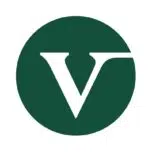As the demand for nurses continues to rise, so does the financial burden of pursuing a nursing education. Many aspiring nurses find themselves saddled with significant student loan debt upon graduation. However, various nurse student loan forgiveness programs offer a glimmer of hope. These programs aim to alleviate the financial strain on nurses by providing options for eliminating student loan debt.
This article explores the different nurse student loan forgiveness programs available, shedding light on their eligibility criteria, benefits and application processes. Whether you’re a recent nursing graduate or an experienced nurse seeking relief from student loans, understanding these forgiveness programs can pave the way toward financial freedom and a rewarding nursing career.
Public Service Loan Forgiveness
Public Service Loan Forgiveness (PSLF) is a federal program designed to provide student loan relief to individuals who work full-time in qualifying public service positions. Established in 2007, PSLF aims to incentivize individuals to pursue careers in public service by helping them manage their student loan debt.
- Employment: Borrowers must be employed full-time by a qualifying employer, such as government organizations, not-for-profit organizations or certain public service organizations, including AmeriCorps and Peace Corps.
- Loan Type: Only William D. Ford Federal Direct Loans are eligible for PSLF. However, other federal loans can become eligible by consolidating them into a Direct Consolidation Loan. However, loan payments made prior to consolidation won’t count toward the minimum requirement.
- Repayment Plan: Borrowers must make 120 qualifying monthly payments under a qualifying repayment plan, such as an income-driven repayment plan. Payments must be in the full amount indicated on your monthly bill and made no later than 15 days after the due date to count as being on time. The best way to ensure your payments are always on time and in the full amount is to sign up for automatic payments.
RELATED: How to Manage Student Loan Debt: Tips for Tackling Payments
Payments only count toward the PSLF program while employed full-time by a qualifying employer, but they don’t have to be consecutive. If you have a period when a non-qualifying employer employs you, you don’t lose credit for previously made payments.
PSLF offers significant benefits for eligible borrowers. It allows them to have their remaining loan balance forgiven without incurring tax liabilities on the forgiven amount because it isn’t considered taxable income.
On Oct. 25, 2022, the U.S. Department of Education announced new regulations to program requirements for PSLF that retroactively count payments borrowers made that were previously denied. These new regulations went into effect on July 1, 2023.
Contact: (855) 265-4038
The Nurse Corps Loan Repayment Program
The Health Resources and Services Administration (HRSA) Nurse Corps Loan Repayment Program pays up to 85% of unpaid nurse student loan debt for registered nurses (RNs), advanced practice registered nurses (APRNS) and nurse faculty committed to serving in communities of need.
- Employment: To qualify, applicants must be employed full-time in a public or private nonprofit Critical Shortage Facility (CSF) or serve as faculty at an eligible public or private nonprofit school of nursing. CSFs are those facilities located in, designated as or serving a Health Professional Shortage Area, which includes any defined geographic area or population within a defined geographic area lacking enough primary care, dental care or mental health professionals for residents.
- Eligibility: Lawful permanent resident of the United States or a U.S. territory; employed full-time at least 32 hours per week as an RN, a certified nurse-midwife, a nurse practitioner or nurse faculty at an eligible site; hold a current unencumbered license; earned a diploma or degree in nursing.
- Eligible Sites: Federally Qualified Health Centers, Rural Health Clinics, American Indian Health Facilities, Community Health Centers, public or private hospitals, small rural hospitals and most other health facilities barring clinics in prisons or correctional facilities and private practice offices.
- Repayment: Receive 60% of the total outstanding qualifying nursing student loan balance for a two-year service agreement. Qualifying participants may also apply for the optional third year of service for an additional repayment of 25% of their original loan balance for a total of 85%.
Although these funds aren’t exempt from federal income and employment taxes, these taxes are deducted directly from the award, so an end-of-year tax bill isn’t due. Funding preference is given to RNs and APRNs based on the greatest financial need, the type of facility where they’re employed and the primary care or mental health HPSA designation. Nurse faculty with the greatest financial need working at schools of nursing where at least half of the enrolled students are from a disadvantaged background may also receive preference.
Contact: (800) 221-9393
The Navient Multi-State Student Loan Settlement
For nurses with loans serviced by Navient, the Navient Multi-State Student Loan Settlement, reached in 2022, has significant implications for nurse student loan forgiveness. Navient, one of the largest student loan servicers in the United States, agreed to resolve allegations of misleading and deceptive practices regarding loan servicing and collections.
As part of the settlement, Navient committed to implementing reforms and canceling the remaining balance of $1.7 billion in predatory subprime private student loans that more than 66,000 borrowers nationwide owed. Borrowers whose loans may be canceled received a notice from Navient in July 2022, along with refunds for payments made on these loans after June 30, 2021. In addition, about 350,000 borrowers placed in certain types of long-term forbearances will receive a restitution payment of about $260.
If you qualify, the only thing you need to do is update or create your studentaid.gov account to ensure the U.S. Department of Education has your current address.
Contact: Rust Consulting at (833) 630-1416 for forbearance steering payments sent to the wrong address, but the settlement administrator can’t tell borrowers why they do or don’t qualify for payment.

Federal Perkins Loan Cancellation and Discharge
Some nurses may be eligible for cancellation and discharge of up to 100% of their Federal Perkins Loans in exchange for five years of service at a facility approved under this program. Full or partial Perkins Loan cancellation depends on the type of loan you have and the date of the loan.
Employment: Nurse applicants must be employed full-time by an approved employer, with loans forgiven over a five-year period.
Repayment: 15% of the original principal loan amount for the first and the second years of service, 20% for the third and the fourth years of service and 30% for the fifth year of service. Repayment amounts include any interest accrued during each year of service.
Although Perkins Loans are no longer offered, nurses who already have one can still benefit from this program by getting their loans canceled. Eligible nurses must apply for this program through the school that dispersed the loan or through the entity that services the loan.
Contact: The school that made the loan or the school’s Perkins Loan servicer.
National Health Service Corps Loan Repayment Program
The National Health Service Corps Loan Repayment Program (NHSC LRP) is a federal initiative focused on increasing access to healthcare services in underserved areas by providing loan repayment assistance to healthcare professionals, including advanced practice nurses. The program offers financial support to eligible healthcare providers in exchange for a commitment to work in designated Health Professional Shortage Areas (HPSAs) for a specified period.
- Eligibility: Lawful permanent resident of the United States or a U.S. territory; participate in or be eligible to participate in Medicaid, Medicare and Children’s Health Insurance Programs; appropriate educational degree, licensure and certification; employed as a certified nurse-midwife, nurse practitioner or psychiatric nurse specialist at an eligible site.
- Employment: Be employed full-time or part-time for two years in clinical practice at an NHSC-approved site in urban, rural or tribal communities with limited healthcare access.
- Repayment Plan: Up to $50,000 for 2 years of full-time service or up to $25,000 for 2 years of part-time service. Recipients may be eligible to apply for additional funds for nurse student loan repayment through 1-year continuation of service contracts.
Application deadlines vary by year. Funding preferences are given to current or former NHSC recipients seeking an extension of their service obligations and clinicians likely to continue practicing in an HPSA after completing their service obligation.
Contact: (800) 221-9393
The Nurse Student Loan Forgiveness Landscape
Many people have said over the years that nurses deserve loan forgiveness as a way for the country to thank them for their service. Hard-working nurses provide vital health-related services to millions of Americans, and nursing faculty help educate future generations of nurses. Without nurses, what would happen to our country’s health?
Nurses with outstanding student loans should remain vigilant of any changes in the student loan forgiveness landscape. Changes in nurse student loan forgiveness programs and applicant eligibility do happen, often with positive results for those wanting some relief from their student loan debt.
Get even more information about nurse student loan forgiveness programs available in our Healthcare Education Loan Forgiveness: A State-by-State Guide.









